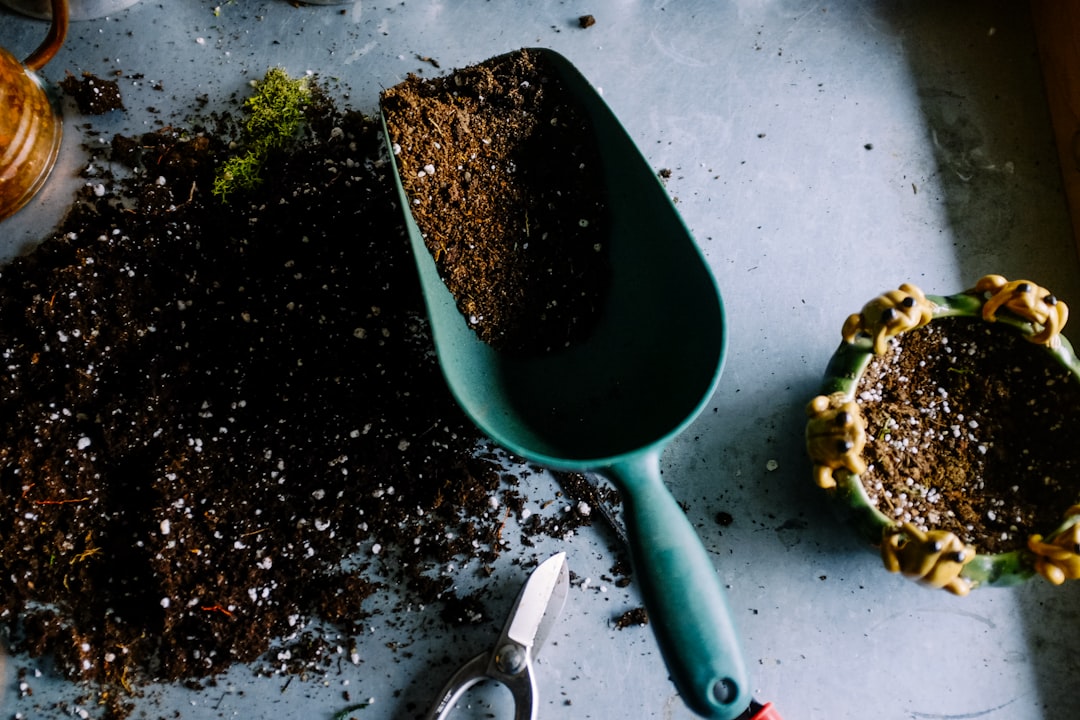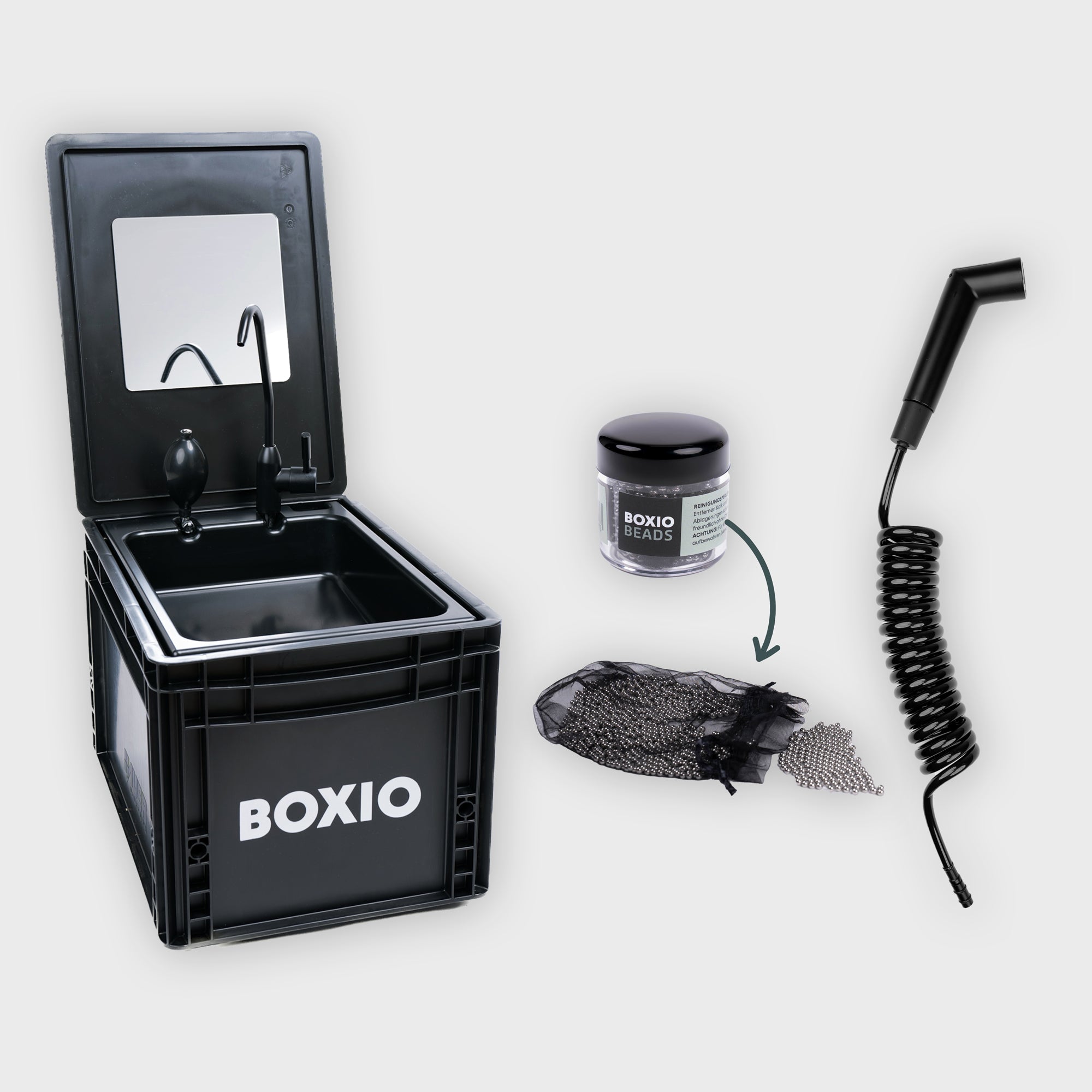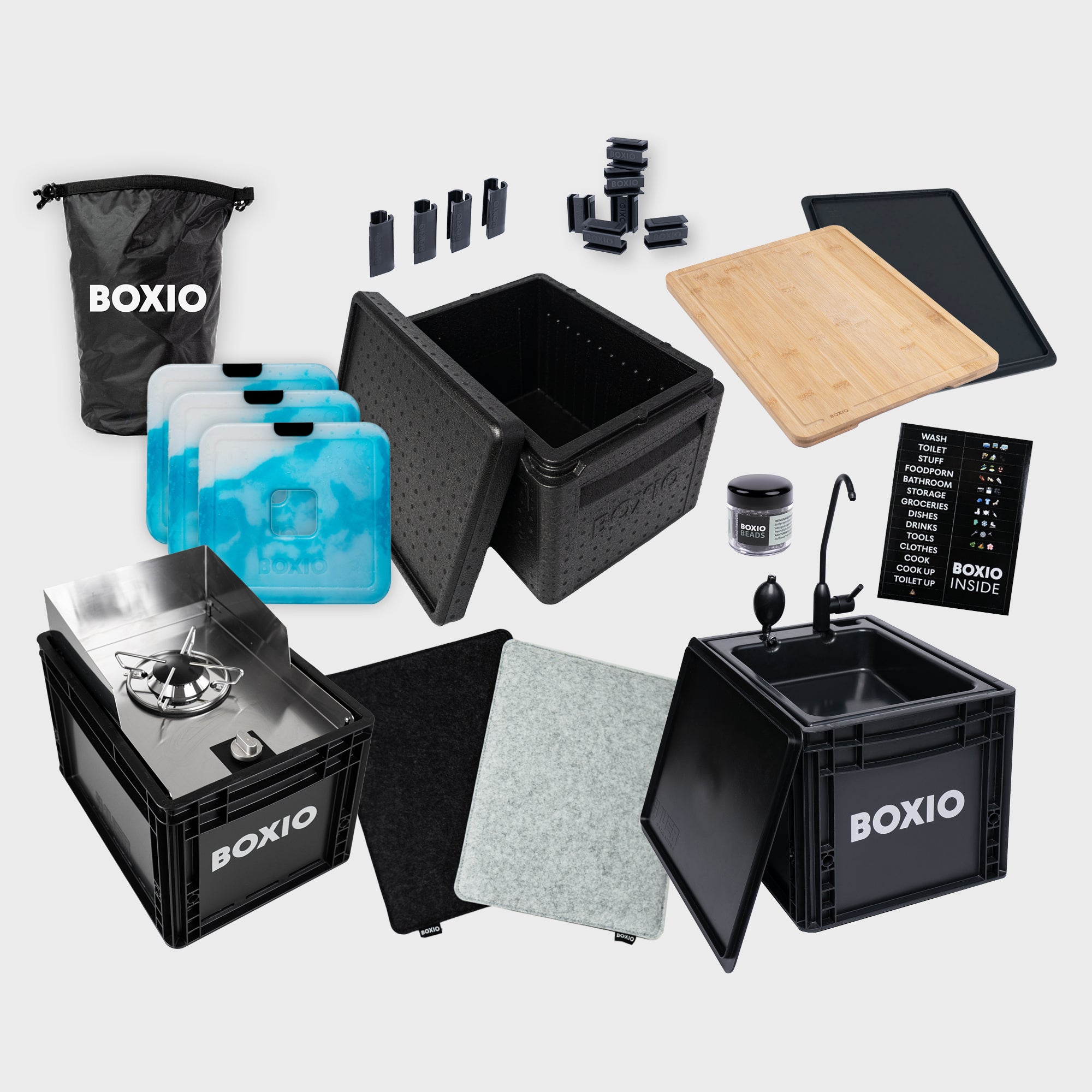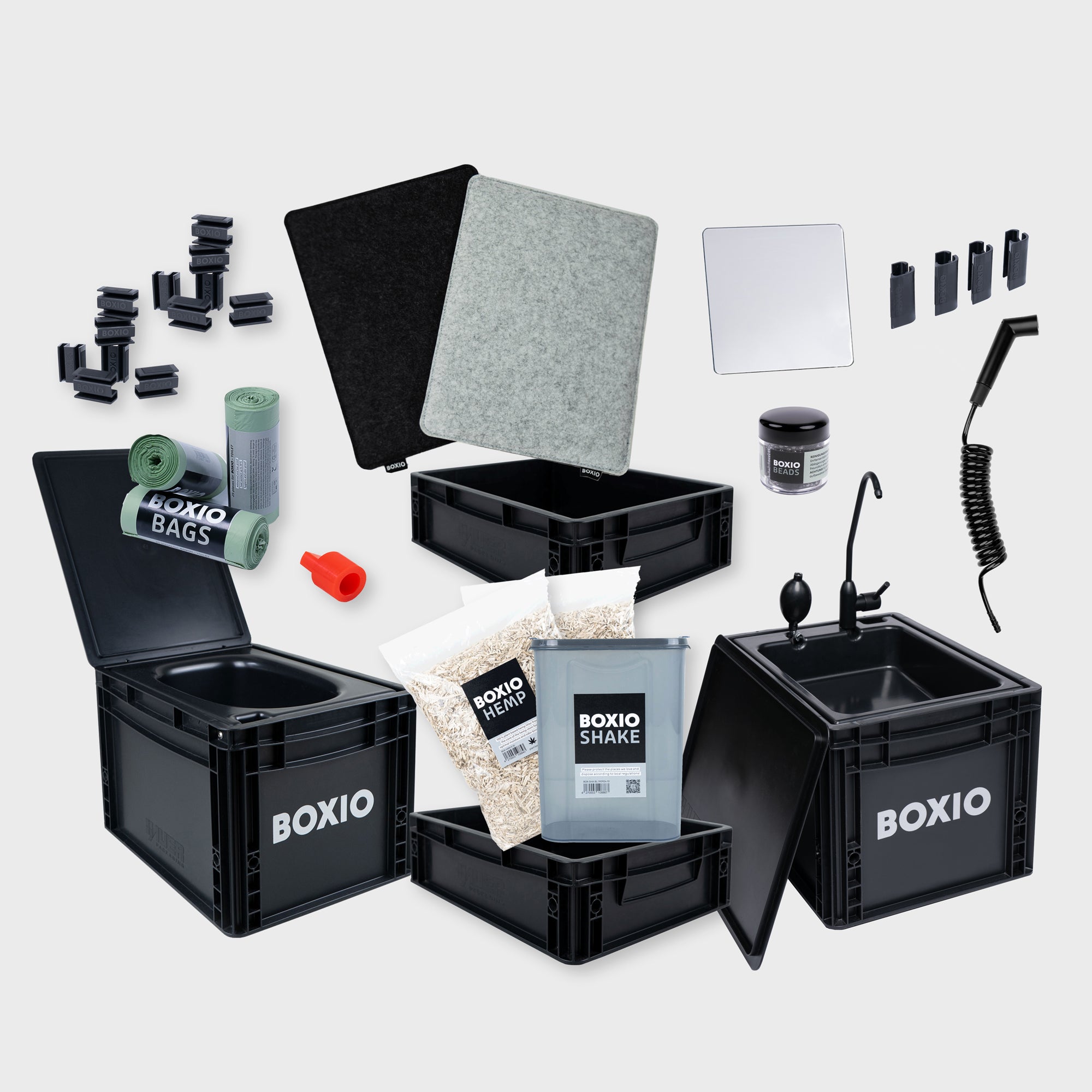Instructions for planting a kitchen garden
Growing a kitchen garden is a rewarding and satisfying activity that allows you to harvest fresh fruit, vegetables and herbs straight from your own garden. In this step-by-step guide, we will walk you through the steps required to create a successful kitchen garden. From preparing the soil and choosing the right plants to caring for and harvesting them, this guide offers practical tips and information to help even beginners create a thriving kitchen garden. Whether on the balcony, in the backyard or in the allotment, anyone can enjoy their own kitchen garden with the right steps and a little commitment. Let's discover the joy of gardening together and find out how easy it can be to grow sustainable and healthy fruit and vegetables right on your doorstep.
Step-by-step guide to creating a kitchen garden without digging
- Waiting for the grass to grow properly.
- Creating a lawn edge.
- Creating an attractive garden border.
- Covering with cardboard or mulch.
- Adding a layer of compost.
- Creating paths between the beds.
- Using a planting calendar.
Creating a kitchen garden without digging is a sustainable and soil-friendly way to grow fresh vegetables and herbs. Here is a detailed step-by-step guide on how to create your own kitchen garden without digging up the soil.
-
Waiting for the grass to grow properly: Before you start planting the kitchen garden, it is important that the grass has reached a sufficient height. This indicates that the soil is fertile enough and the vegetation will grow well.
-
Creating a lawn edging: To delineate the area for your kitchen garden, you can create a lawn edging. This not only helps to structure the garden, but also prevents unwanted grass from growing in.
-
Creating an attractive garden border: An attractive garden border can be made of various materials such as wood, stone or metal. It not only serves the visual purpose, but also the functional demarcation of the garden.
-
Covering with cardboard or mulch: To suppress weeds and protect the soil from drying out, you can cover the ground with cardboard or a layer of mulch. This also promotes soil fertility.
-
Apply a layer of compost: To enrich the soil with nutrients, the regular application of a layer of compost is crucial. The compost improves the soil structure and promotes plant growth.
-
Create paths between the beds: To make the garden easily accessible and avoid stepping on the beds, you can create paths between the growing areas. This makes it easier to care for and harvest the plants.
-
Using a planting calendar: To harvest fresh vegetables and herbs all year round, it is advisable to use a planting calendar. This provides information on when which plants should be sown or planted.
Creating a kitchen garden without digging is not only ecological, but also an effective way to produce your own fresh and healthy food supply. Not digging protects soil life and promotes the natural structure of the garden soil. By creating a balance in the soil, the soil quality is improved in the long term, which has a positive effect on plant growth. In addition to pure food production, a kitchen garden also provides an opportunity for physical activity, stress relief and a connection to nature. Gardening can have a therapeutic effect and can be an educational experience for both adults and children. It is important to realize that a kitchen garden requires time and care. Regular watering, weed removal and monitoring plant growth are essential tasks to achieve a bountiful harvest. In addition, it is advisable to familiarize yourself with the needs of the individual vegetable and herb species in order to create optimal growing conditions. Creating a harmonious balance in the garden not only promotes plant health, but also biodiversity. By using natural fertilizers and avoiding chemical pesticides, you support the environment and help to maintain a healthy ecosystem. A kitchen garden is therefore not only a source of fresh food, but also a contribution to environmental protection and sustainability. Creating a kitchen garden without digging requires some time and effort initially, but rewards you with a varied and healthy harvest and a deeper understanding of the cycles of nature.
Soil preparation and analysis
Soil preparation is a crucial step for a healthy and productive garden. In this section, we will talk in detail about soil analysis, planning and laying out paths, creating the beds and composting area, and fencing the garden.
Soil analysis: the key to successful gardening
Before you start planting, it is very important to know the condition of your soil. Soil analysis involves not only determining nutrient levels, but also soil structure and pH. We will explain in detail how to take a soil sample, have it analyzed and interpret the results correctly to create the ideal conditions for your plants.
Planning and creating paths: Function and aesthetics combined
Paths are not only functional, but can also enhance the beauty of your garden. We will discuss different materials such as gravel, wood or paving stones for garden paths and help you choose the right design according to your garden design. Learn how to integrate paths that add structure and character to your garden with clever planning.
Creating the beds and composting area: the basics for healthy growth
Creating beds requires a well thought-out approach. We will give you valuable tips on how to choose the best locations for your beds, take into account the effects of sunlight, soil conditions and irrigation and set up an efficient composting area. Learn how to create a fertile environment for your plants through proper placement and care of your beds.
Fencing the garden: protection and design in one
Fencing not only serves to protect against unwanted guests such as pests or animals, but can also be a design element. We will discuss different types of fencing such as wood, metal or hedges and help you to find the best solution for fencing your garden. Learn how to combine functionality and beauty to harmoniously delineate and beautify your garden.
Planting and care in the kitchen garden
Preparing the soil and planting
An important step for successful harvests in the kitchen garden is the correct preparation of the soil. It should be loosened, cleared of weeds and enriched with sufficient nutrients. Only then is it ready for planting various vegetables and herbs. When planting, it is important to maintain the correct distance between the plants and pay attention to the respective needs of the plant species.
Preparing the soil also involves analyzing the pH value to ensure that it meets the requirements of the planned plants. Adding compost or other organic materials can also improve soil fertility. When planting, it is advisable to opt for mixed crops that complement each other or protect against pests. A layer of mulch can help to retain moisture and reduce weed growth.
Care and harvesting in the kitchen garden
Care of the kitchen garden requires attention and continuity. Regular watering is crucial, especially during dry periods. Fertilization should be adapted to the needs of the plants, whereby natural fertilizers can be used. Protection against pests can be achieved by using natural enemies or biological pesticides.
Harvest time is the crowning glory of seasonal work in the kitchen garden. It is important to harvest the vegetables at the optimum time in order to preserve their flavor and nutritional content. The freshly harvested produce can be enjoyed immediately or preserved for later consumption, whether by freezing, preserving or drying. The connection to nature and the joy of your own harvest are priceless and make the kitchen garden a place of relaxation and fulfillment.
For a successful harvest, it is also important to pay attention to crop rotation and to check the garden regularly in order to detect diseases or pest infestations at an early stage. Diverse planting with different types of vegetables also promotes ecological balance and reduces the risk of pest problems. In addition, the use of raised beds or cold frames can increase crop yields and extend the growing season. Last but not least, sustainability in the kitchen garden should also be taken into account by using organic cultivation methods and making efficient use of resources such as water and energy.
Conclusion
Creating a kitchen garden can be a rewarding and fulfilling experience. By creating your own kitchen garden, you can not only enjoy fresh fruit, vegetables and herbs, but also connect with nature and develop a sense of self-sufficiency. With this step-by-step guide, you should be well equipped to successfully create and maintain your own kitchen garden. Have fun gardening and harvesting!







